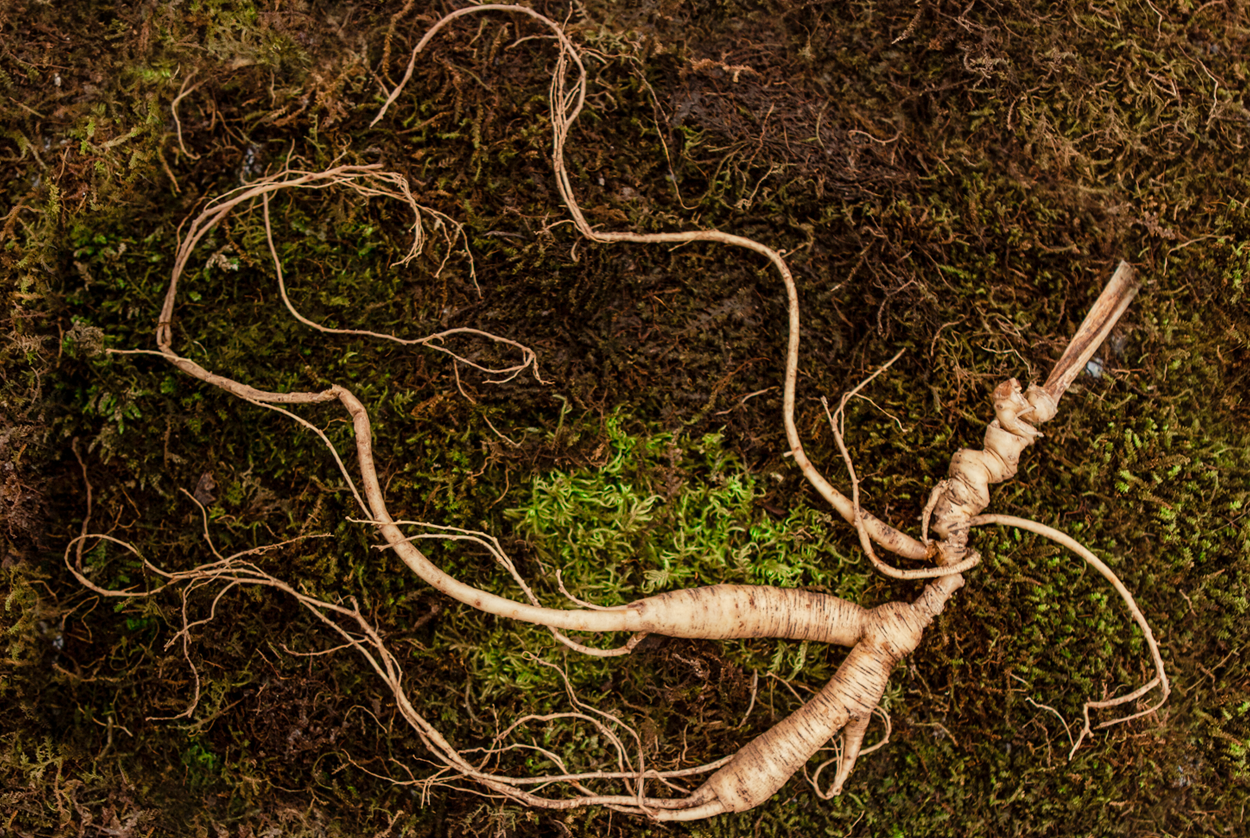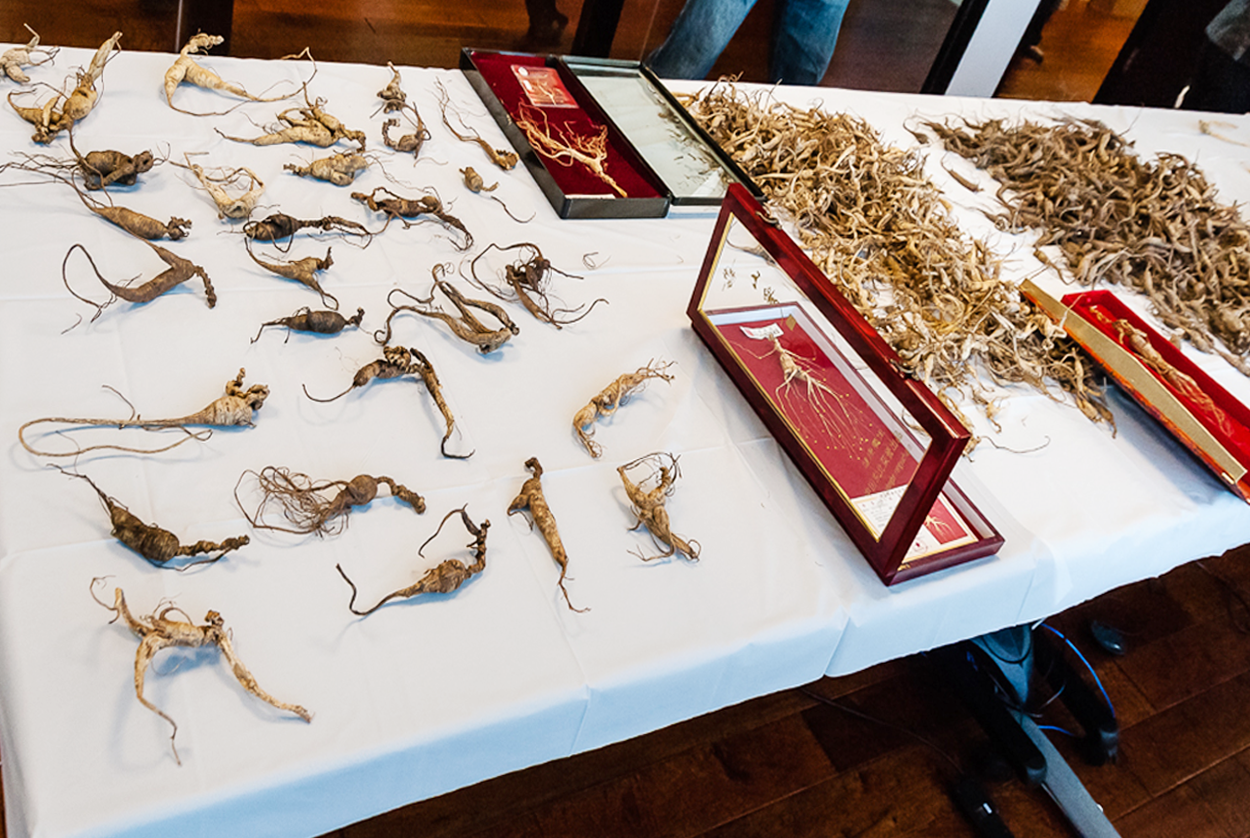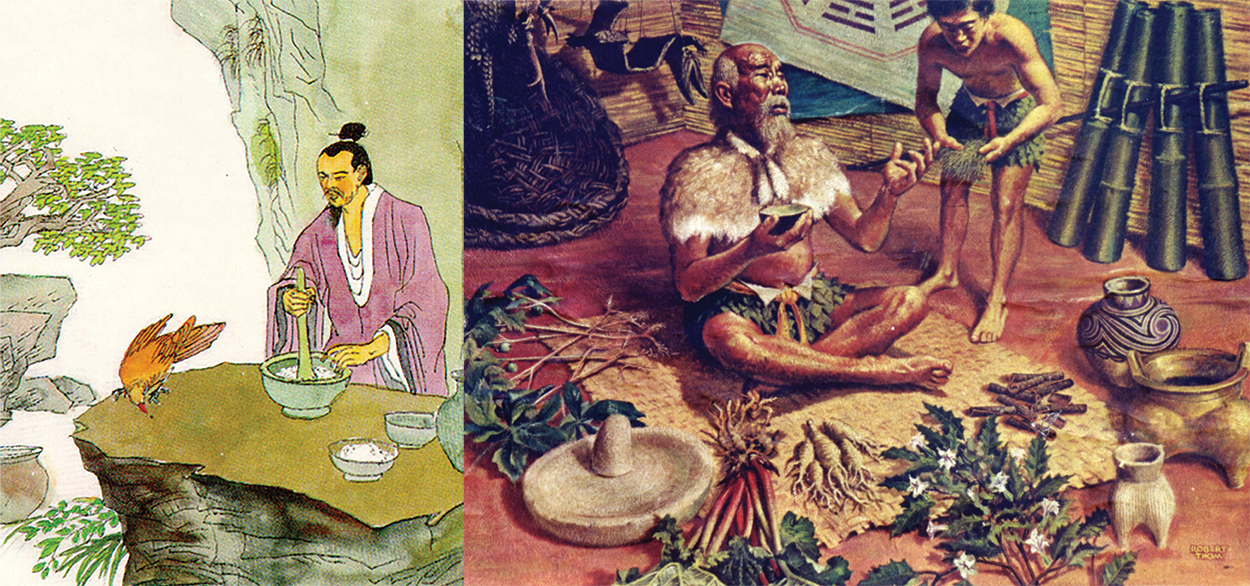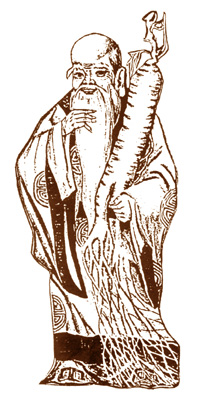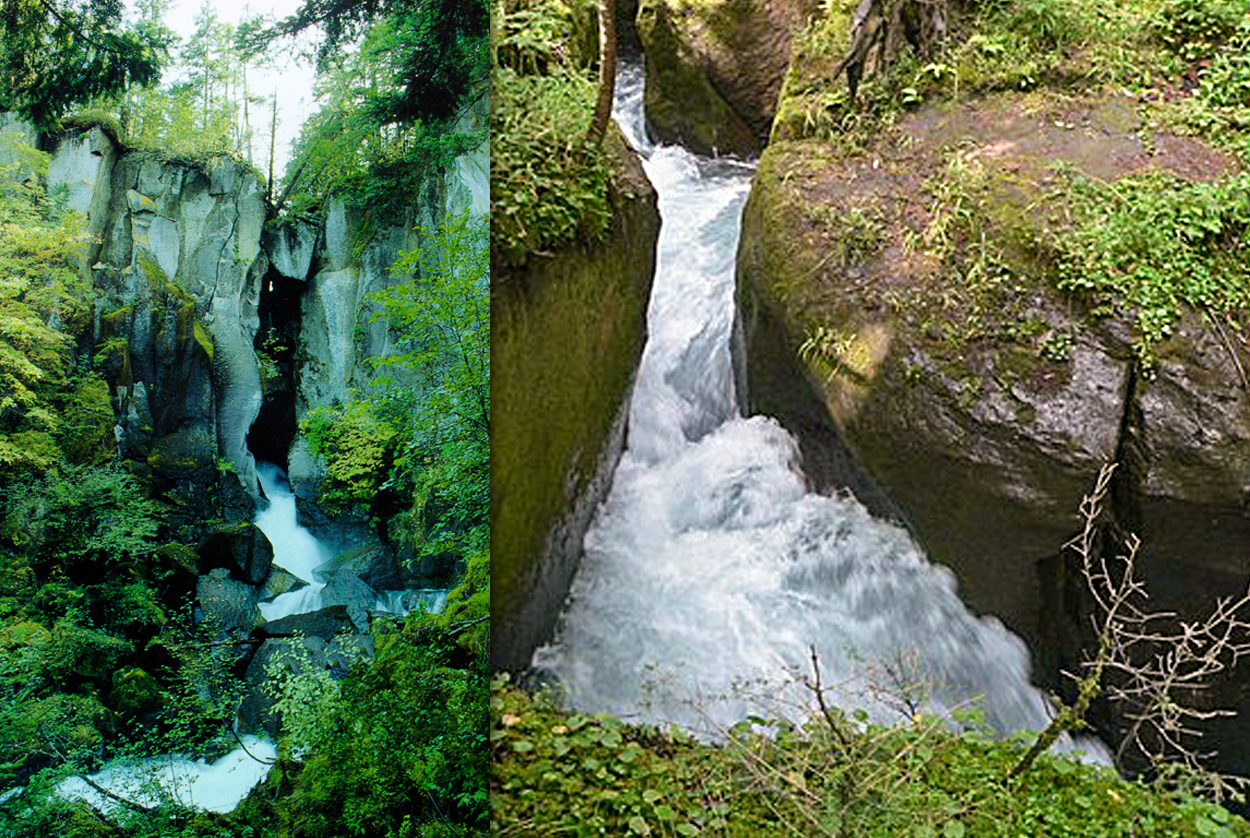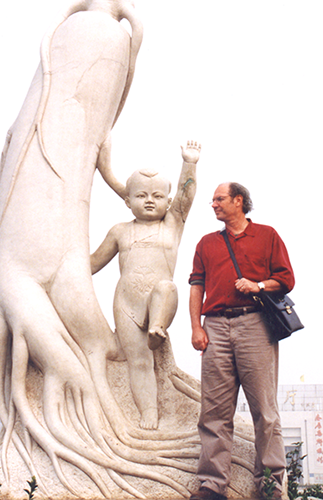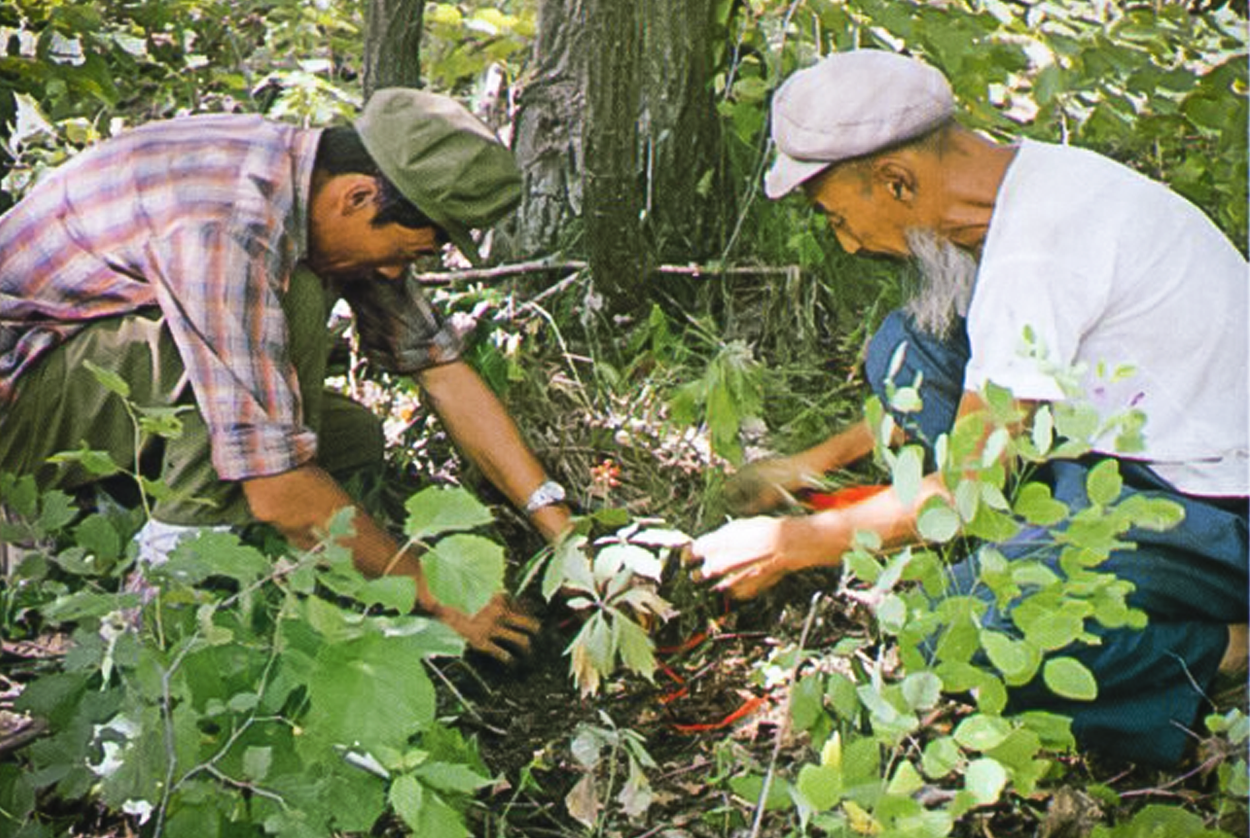What is Wild Ginseng?
Ginseng, the root of Panax species, is a very well-known tonic herb. It has been used as a tonic in China, Korea and Japan for thousands of years. Ginseng occupies a prominent position in the herbal best-seller list and is considered the most widely taken herbal product in the world. Ginseng is currently one of the most popular herbs used nutraceutically, with an annual sale of over $200 million (probably much higher). It is estimated that more than six million Americans regularly consume ginseng products. As it has been for thousands of years, it is mainly used to as an adaptogen to increase resistance to physical, chemical (toxic) and biological stress, to boost general vitality, to improve mental power, to slow down aging, and to prolong the years of one's life.
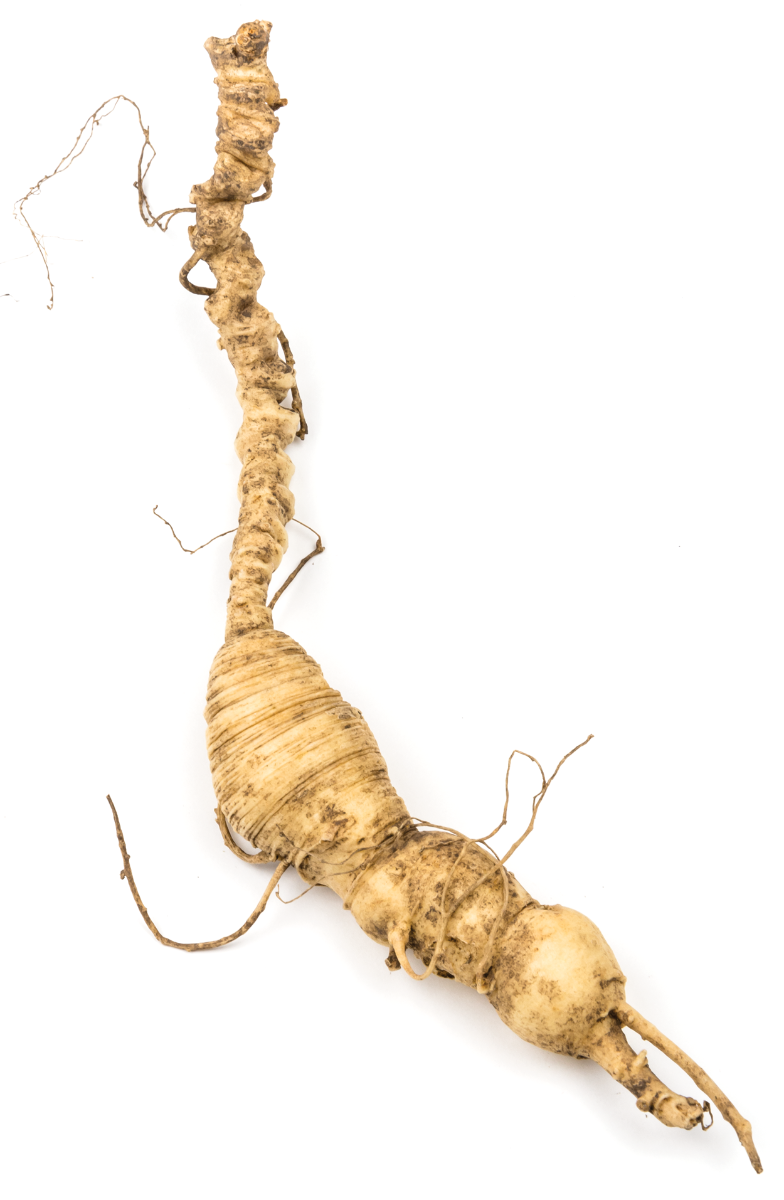 Ginseng products are popularly referred to as "tonics," a term that has been replaced by "adaptogen" in much of the alternative medicine literature. The term "adaptogen" connotes an agent that purportedly increases resistance to physical, chemical, and biological stress and builds up general vitality, including the physical and mental capacity for work. Both American and Panax (Asian) ginseng roots are taken orally as adaptogens, aphrodisiacs, nourishing stimulants, and in the treatment of sexual dysfunction in men.
Ginseng products are popularly referred to as "tonics," a term that has been replaced by "adaptogen" in much of the alternative medicine literature. The term "adaptogen" connotes an agent that purportedly increases resistance to physical, chemical, and biological stress and builds up general vitality, including the physical and mental capacity for work. Both American and Panax (Asian) ginseng roots are taken orally as adaptogens, aphrodisiacs, nourishing stimulants, and in the treatment of sexual dysfunction in men.
The species name “Ginseng” comes from the Chinese word ren shen which means “human-like root” (a lot of people call it "man root") because ginseng roots resemble a human body. Ginseng is believed to be rich in "three treasures" – Jing, Qi and Shen. Jing is the ancestral genetic energy that determines the power of our life and our life span, Qi is our vitality and protective energy, and Shen is our mind, spirit and consciousness. Ginseng is a tonic to all three treasures, and is referred to as the King of Herbs.
Throughout history, ginseng had been used primarily as a tonic to invigorate weak bodies, to boost mental power, to promote spiritual potency, to calm the nerves, to increase the vitality of warriors, workers and athletes, to enhance sexual power, and to help the restore bodily balance (homeostasis) after periods of depletion due to overwork, stress, trauma or illness. Ginseng is considered to be the ultimate Qi tonic herb in the world, and is capable of quickly and profoundly restoring spent Qi in those who consume it.
Until the middle of the twentieth century, most ginseng was still collected in the wild for use by those who could afford it. Panax ginseng was first cultivated around 11 BC. But the wild variety remained most in demand. In the last fifty years of the 20th century, cultivation of ginseng was tremendously developed and this formerly extremely rare and precious herb became available to the masses. First the Koreans, then the Chinese, mastered the modern horticultural art of growing excellent ginseng on plantations. Ginseng takes many years to grow -- at least four years for anything decent, and 6 to 10 years for something good or excellent. The process of large scale cultivation was not easy to develop. Ginseng only grows well in very harsh alpine climates and is susceptible, when young, to many environmental factors that can kill it. Without the use of chemicals, cultivated ginseng would have been very difficult to establish as an industry.
Ginseng's Adaptability
Ginseng is related to the carrot. But unlike a carrot which can only survive for a couple of years, ginseng can survive in the wild for hundreds of years. All natural plants in nature are hardy, and face dramatic challenges in their own environments. But ginseng is one of the hardiest plants of all. It is soft like a carrot, it is small, and does not have hard protective bark or toxins to protect it. Yet it can adapt to an enormous range of stresses and actually survive for decades or even centuries. It's only weakness is that it is one of the most revered herbal foods of humans, and most ginseng roots succumb only when they are plucked by a human. Bears and deer also like ginseng. It's strength is thus its weakness. If it were toxic or non-beneficial to humans, it would be one of the most abundant plants in the northern forests of the world. Its "adaptability" is its key feature.
Age
Ginseng (Ren Shen) means "Man Root" in Chinese, which includes the concept of woman. Ginseng roots can look strikingly human. But other factors were related to the naming of this plant after the human species. One of the observations that were made early on was that ginseng ages in a similar way to humans - at least in terms of obvious life cycle.
Ginseng baby plants are born vulnerable, just like human babies, and grow under the cover of the parental ginseng plant. Young plants are susceptible to attack by fungus, worms and birds, and thus many do not survive the early stage of life. Though they develop some maturity over the first decade, they are not fully mature until they are about twelve to fifteen years old, at which point they have achieved ginseng adulthood. Then they typically live, if not killed by prey (humans, bears and deer), for one hundred years or longer.
Ginseng will live for decades if it gets past its first few years of vulnerability. Ginseng plants over 300 years old have been found, and roots as old as any human are relatively common. Considering the fact that when they're found, they're plucked from the ground, which of course reduces their population and frequency, this is an astounding accomplishment.
How do they live so long? First, ginseng grows in very harsh places. Ginseng likes to live where the weather gets very cold in the winter, but needs warmth in the summer. They grow best in mountains rich in minerals. So they grow in alpine regions. Also ginseng can hide. They tend to grow in inaccessible places like ravines. This adaptation has allowed them to avoid being eaten by deer, bears and humans for tens of thousands, and perhaps millions of years. They easily camouflage themselves among other plants and thus avoid being eaten. Wild ginseng roots are hard to find.
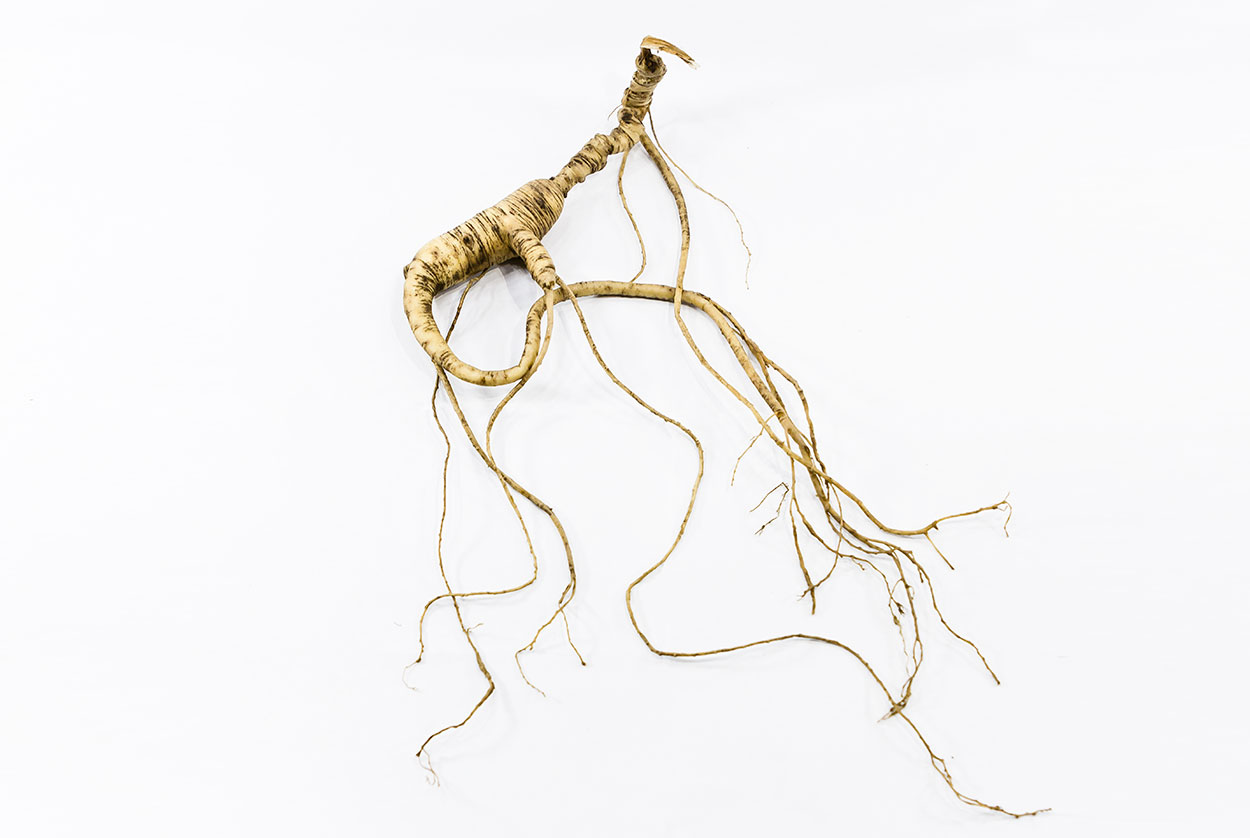
Recent genetic research in Asia indicates that ginseng is genetically pre-disposed for longevity due to a unique genetic mechanism. There are indications that when ginseng attains an age of about twelve or thirteen years in the ground, regions of the cell that include a section of its DNA and structures in the cytoplasm of the cell and cell membrane, known as the Death Domain, "down regulates." The cells become less reactive to factors that would normally cause a cell to die. As a result, ginseng becomes almost immortal. The three hundred year old root found in 2007 in Changbai Mountain showed no signs of age-related degeneration or disease. It may have lived a thousand years or longer if it had not been found and dug up (that root sold for $450,000).
Certain unique sensors, termed Death Receptors on the surface of certain cells, are also turned way down in ginseng as it become "adult." Death Receptors detect the presence of extracellular death signals and, in response, normally ignite the cells intrinsic "apoptosis" machinery. Apoptosis is a cell suicide mechanism that has many beneficial effects, but also ends up resulting in aging and death in most species of multicellular plants and animals. With apoptosis being limited in ginseng, the ginseng root ceases to be at a threat of dying from old age.
A number of members of the Death Receptor family in ginseng have been identified. They control the Death Domain in the nucleus, cytoplasm and cell walls (membranes) of the cells. Ginseng's mechanism for dealing with Death Domain stimulation appears to promote activation and expression of survival genes that may contribute to ginsengs surprising longevity.
Determining the Age of a Ginseng Root
Pearl Dots
The roots and root hairs of wild ginseng will have small bulbs known as "pearl dots." Pearl dots are not present on cultivated roots. This is the first thing every ginseng buyer checks to make sure the ginseng root is authentically wild. It is not possible to fake pearl dots.
Striations
Wild ginseng roots are generally striated. Striations are lines that develop around the root at small intervals, reflective of the stress experienced by the root in its survival process and due to cycles the ginseng plant experiences. Highly striated roots are generally stronger, and more potent nutraceutically as an adaptogen. True striations of real wild ginseng are beveled, meaning the area between striations is raised. Cultivated ginseng generally has no striations, or very few at best.
However, because of the high value of wild ginseng compared to cultivated ginseng, many fake "wild" ginseng roots are created for sale in China to unsuspecting, unsophisticated buyers. Part of the process of creating this so-called "art ginseng" is to carve striations into a cultivated ginseng root with a razor to give it the appearance of a wild root. The striations can appear quite real at first glance, but upon close inspection there is a very big difference in the real striations of a true wild root and those carved in. The rounded beveling in between the striations is a primary indicator. 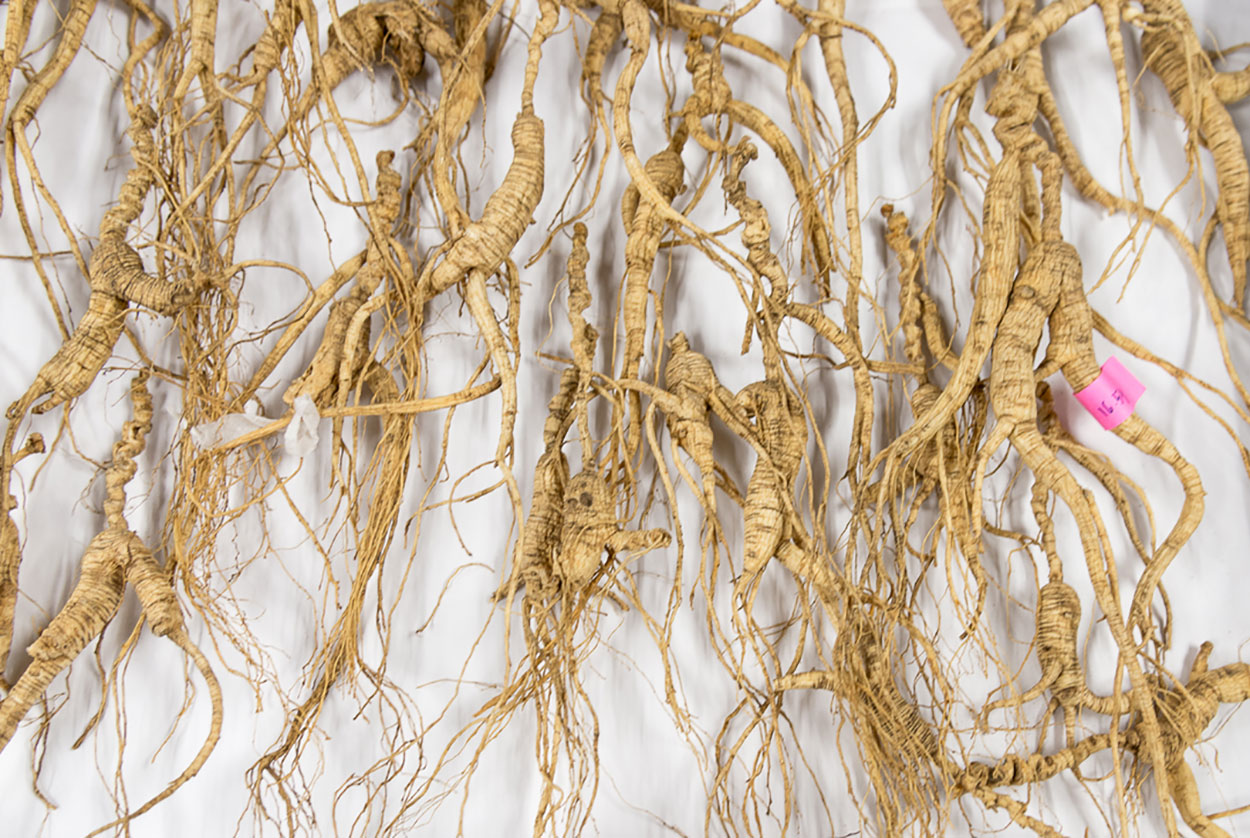
Head Length
The "head" of the ginseng is actually its rhizome, the part of the ginseng root that grows at the surface of the earth and from which the above ground part of the plant emerges during the warm months of the year. A ginseng root puts up exactly one sympodium ("stem") each year.
Wild ginseng root heads are elongated. Each year, a new notch is formed at the end of the existing rhizome (head). Eventually, the head can become quite long. Therefore, the longer the head, the older the root. The more notches, the older the root. A root with 20 notches in the head is 20 years old, and a root with 100 notches in the head is 100 years old.
Ginseng counterfeiters can produce fake heads. They do this by taking many short heads from cultivated roots and gluing them together to look like a long head. The unsuspecting buyer will look at the long head and go "Wow, this is an old root!" But close inspection easily reveals the glued seams of the fake rhizome. It's impossible for counterfeiters to get the color and texture of their glue exactly right. We check every root in Heaven Drops for the reality of the rhizome's length. Luckily, our vendors are certified and are very professional and trustworthy. We have worked with them all for a decade or longer. So we don't ever find any "art ginseng" during our final inspection. But we see "art ginseng" for sale in China, especially in cities frequented by western tourists, and even more so in herb shops in American Chinatowns. Many Americans are easily fooled by the "art ginseng" rip-off, including some herbalists who consider themselves professional but are unaware of the counterfeiting. If we do buy a root or roots from a new vendor, we look at the roots under a magnifying glass, paying primary attention to the head, pearl dots and striations.
Gnarliness
Ginseng roots are the king of adaptogens because they themselves are so adaptive. Every stress and challenge they encounter encourages the production of more, different ginsenosides, that provide the ability to cope with the stressor. So the stress the plant has experienced determines the potency of the root as a human tonic.
The quality I call "gnarliness" is absolutely an essential factor in determining the potency of a wild root. A root that has been exposed to attacks by bugs, harsh weather shifts, even fungus, will be much uglier than one that was not exposed to these challenges. They will grow "gnarly." For my own personal use, I never choose a smooth fancy root. I choose the ugliest one I can find because i know it stood the test of stress. A good worm bite, a crooked body, rough skin, even some discoloration, all tell me that this is a great root. To us "ugly" is beautiful. We use a lot of ugly roots to make Heaven Drops. Of course, some roots are straight and unblemished, and still they're ancient roots, These roots are still incredibly valuable and beneficial - they lived for decades if not centuries. But for your classic 40 year old wild ginseng root, gnarly is very, very cool.
Size
The size of a ginseng root can vary dramatically, Wild roots can be very small, big or even very big. The determining factors are soil condition, weather, age, and probably some genetics. It has been demonstrated that small wild roots can be dramatically enlarged under certain favorable conditions, but enlarging them does not increase their potency - perhaps the contrary. Small, old roots have lived hard lives and have developed amazing ginsenoside profiles to survive (or thrive). To us, a small yet very old root is miraculous and extremely great.
A very robust root may get larger, or longer. Long roots are considered propitious. They have grown well into the ground to survive and often have the strongest actions. I have seen a root that is nearly 5 feet long. Actually, it takes quite a collector to find such a root and to take the care and time (muscle and patience) to dig out a root that is several feet long. These roots are very thin and fragile.
Roots can grow to be quite large if they have been blessed with a very hidden location and excellent soft soil. A very old, large root will fetch the most value at the market. But the large root may or may not be any better than a smaller root that has experienced significant hardship and survived to old age.
So there is one more quality that is essential in understanding the beauty and potency of a wild ginseng root.
Taste
Wild roots taste a little different than cultivated ginseng roots. They have a "bite." The spiciness can stick in your throat, but goes away in a minute or two. Still, wild ginseng tastes very good. Proper, conscious extraction mellows out the flavor without changing the effect.


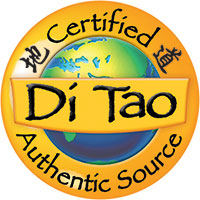


 Ginseng products are popularly referred to as "tonics," a term that has been replaced by "adaptogen" in much of the alternative medicine literature. The term "adaptogen" connotes an agent that purportedly increases resistance to physical, chemical, and biological stress and builds up general vitality, including the physical and mental capacity for work. Both American and Panax (Asian) ginseng roots are taken orally as adaptogens, aphrodisiacs, nourishing stimulants, and in the treatment of sexual dysfunction in men.
Ginseng products are popularly referred to as "tonics," a term that has been replaced by "adaptogen" in much of the alternative medicine literature. The term "adaptogen" connotes an agent that purportedly increases resistance to physical, chemical, and biological stress and builds up general vitality, including the physical and mental capacity for work. Both American and Panax (Asian) ginseng roots are taken orally as adaptogens, aphrodisiacs, nourishing stimulants, and in the treatment of sexual dysfunction in men.